Cartel Wars: How A Border Wall Will Increase Drug Cartel Violence in Mexico
This country spotlight refers to data published in 2019. For the most recent data, go to our Rights Tracker.
Content Warning: this article contains discussion of extreme violence and human rights violations.
The issues of crime and illegal immigration in the southern United States have been thrust to the forefront of American political debate since the election of Donald Trump as President.
The President has argued that the best way to counter these problems is to construct a border wall between the United States and Mexico that would cover the whole border. Presently, only parts of the border have wall sections. Internationally, since the cold war ended, there has been a rise in the construction of national border walls (link no longer available).
Israel has developed a wall to reduce terrorism; Egypt built a wall along the Gaza strip to prevent weapons from being smuggled, and Spain built a barrier to deter illegal immigration and smuggling from Morocco.
While the rate of illegal crossings has reduced in these countries, the death rate has risen. A more tightly fortified border makes the trip more dangerous. Human smugglers are often needed to help people cross the border illegally. In Mexico, many of these smugglers are connected with drug cartels that incorporate human trafficking along drug routes.
Erecting a stronger continuous border wall along the US-Mexico border may lead to an escalation in violence and greater human rights violations. The newer physical barrier might reduce cartel human trafficking and narcotics, but that will likely come at a cost.On 06-19-1019 construction crews continue work on the replacement border wall on the boundary between the United States and Mexico near the Calexico Port of Entry. Photo by Mani Albrecht.
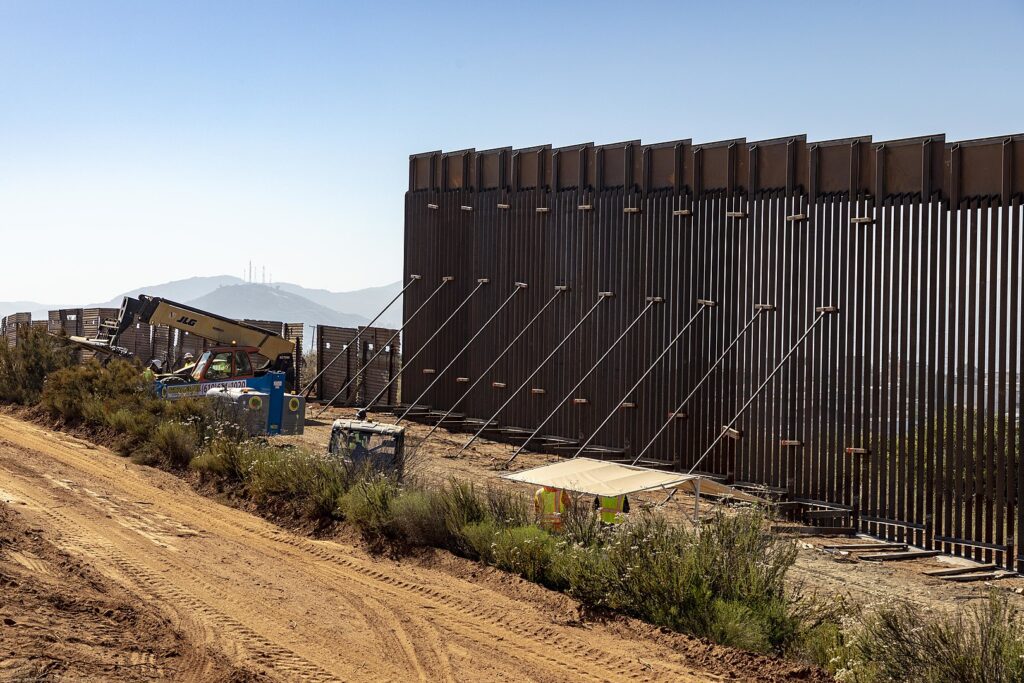
A more tightly controlled barrier will increase fragile tensions between top Mexican drug syndicates and the Mexican government. Currently, an uneasy alliance exists among the major rings in Mexico. According to a DEA report in 2018, Mexico is dominated by the Sinaloa Cartel, Juarez Cartel, Los Zetas, and a string of smaller cartels. Each control territory or ‘plazas’ that collect revenue for trafficking narcotics, weapons, and humans.
Historically, when the distribution routes are threatened it results in war between drug syndicates. For example, in 2012, the newly elected Mexican government adopted a more militarised strategy targeting the cartels; it strangled their resources and revenue streams. The cartels responded with an increase in violence against the government, civilians, and other rings. Mexico saw its worst spike in forced disappearances, crime, and homicides. As the border wall is constructed, officials in the United States and Mexico can expect another spike in mob violence. Torture, forced disappearances, executions are common tactics as they suppress local populations and instil terror. The cartels possess sophisticated weaponry and maintain large paramilitaries that rival the Mexican army.
Many of these acts of violence often involve the Mexican police or government officials. The cartels pay billions in bribes to judges, police, military, and politicians. Many of these individuals assist the syndicates through committing torture and forced disappearances, or by shielding the perpetrators from prosecution.
Similarly, the Mexican government often acts with violence against the cartels. The government strategy to counter the cartels has focused on using the military. The Mexican military has been responsible for large numbers of illegal killings, torture, and disappearances.
Building a border wall will decrease the smuggling routes across the U.S. border, prompting more violence as the syndicates attempt to keep these routes open and compete for control.
What HRMI data on Mexico show
Among the 19 countries on which HRMI collected civil and political rights data in 2019, Mexico ranked near the bottom on many of the rights we measured.
Here are the most recent HRMI scores, showing the level of respect for various human rights in Mexico:
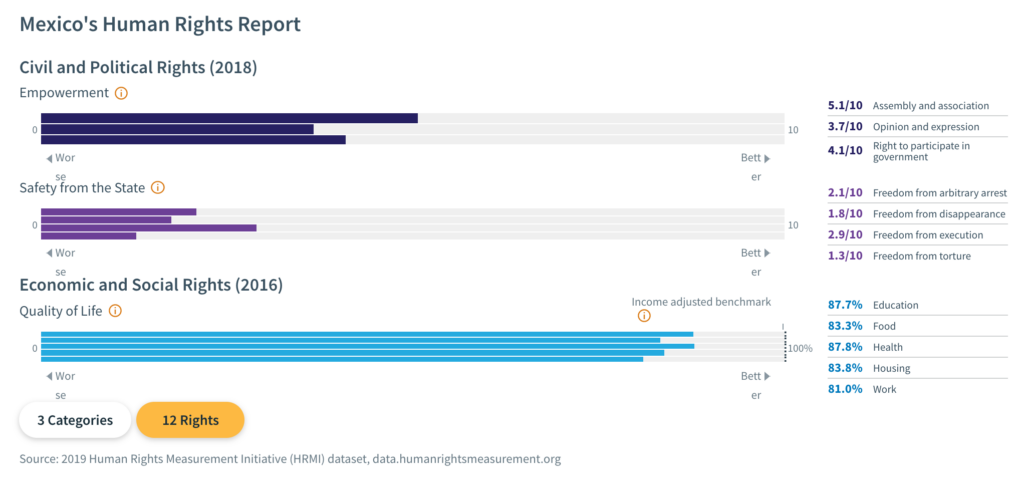
2019 HRMI human rights scores for Mexico. Explore the data here.
Among countries in the Americas in the HRMI dataset, Mexico performed poorly, especially on physical integrity rights, or ‘safety from the state’, as shown in this graph:
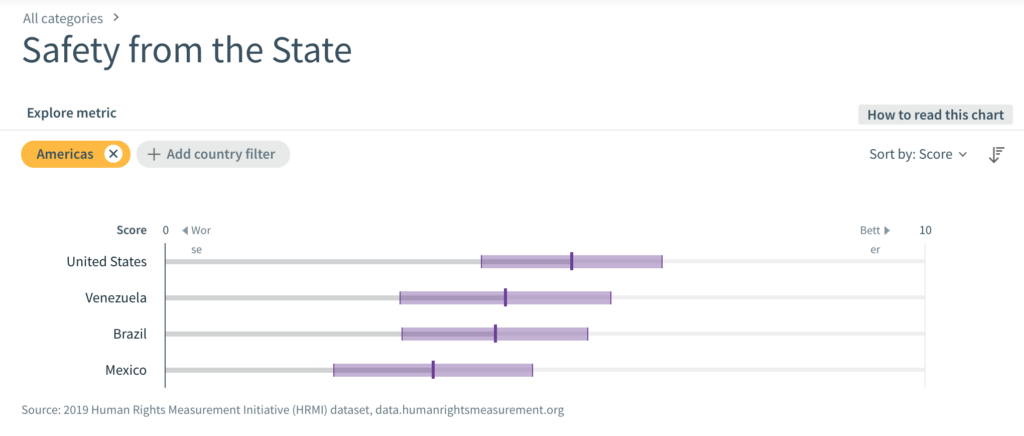
Graph showing performance on physical integrity rights among countries in the Americas. Explore the data here.
Torture and ill-treatment
Torture is a common tactic of the cartels in Mexico, and this is reflected in Mexico’s HRMI score for freedom from torture of a very low 1.3 out of 10.
Cartels are notorious for brutalising their enemies and rival cartel members in grotesque ways to strike fear into those that would oppose them. El Chapo, the leader of the Sinaloa Cartel cut the head off his rival with a chainsaw while he was alive. Another victim of cartel violence was dismembered, stuffed into steel drums, and had his face peeled off. Subsequently, it was attached to a soccer ball and left outside of a city hall.
Moreover, accounts are widespread of government forces using torture on suspected cartel members to extract information and gain confessions. In 2018, a government inquiry was opened into 9,000 accounts of government torture.
Arbitrary arrest and detention
The extreme violence of the cartels often provokes mass and arbitrary arrests by the Mexican police. Mexico has a score of 2.1 out of 10 for freedom from arbitrary arrest. Many of the victims are innocent and have no ties to the syndicate.
In 2016, police officers arbitrarily arrested a 14-year-old disabled boy; they handcuffed him, beat him, and forced him to confess.
Moreover, the police sometimes work for the drug cartels. They will often detain individuals under orders from the cartels. In 2014, 43 students from Ayotzinapa Rural Teachers’ College were engaged in a protest in cartel-controlled territory. Local police officers under cartel orders intercepted the bus and turned the students over. They were subsequently murdered and their bodies burned.
Disappearance
Forced disappearances are common in Mexico, whose HRMI score is 1.8 out of 10. The perpetrators can be the Mexican government or the drug cartels.
Human Rights Watch reports that there are currently around 37,000 people who have disappeared in Mexico, many of them have been civilians, journalists, police, or government employees.
In March 2018, three university students were kidnapped by the cartels for filming a home in a cartel-controlled area. Their bodies were dissolved in acid.
In 2018, 19 Mexican police officers were arrested for aiding the Mexican cartels. These police officers are accused of kidnapping and murdering 15 civilians. The Mexican police and military have also been heavily implicated in forced disappearances. The majority of these cases involve government counter-cartel operations where civilians were suspected of working with syndicates. Police and military often grab people from the streets and they never return. When cartel violence is done with police involvement or tacit permission, it is included as a violation of human rights.
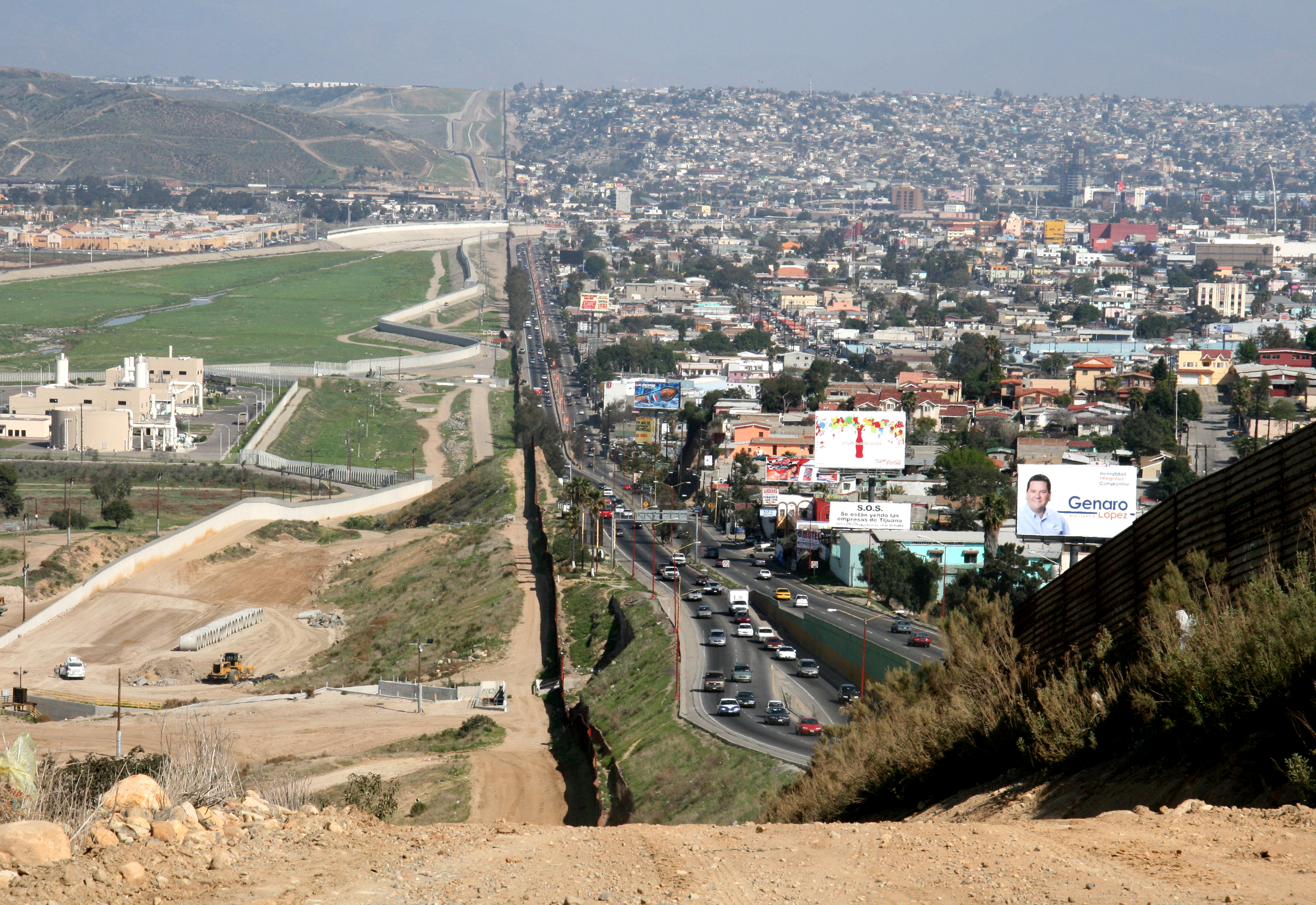
A small fence separates densely populated Tijuana, Mexico, right, from the United States in the Border Patrols San Diego Sector. Construction is underway to extend a secondary fence over the top of this hill and eventually to the Pacific Ocean. Source: Wikipedia.
Freedom from execution
Mexico has a low score of 2.9 out of 10 for freedom from execution, a composite score which includes extrajudicial killings. Since 2018, homicides have hit a new high, at over 28,000, many related to the drug cartels. In the constant battle between Mexican police and drug rings; civilians are often gunned down by the police for being suspected drug traffickers. Journalists are especially vulnerable to summary executions by either the police or cartels. In 2018, Juan Carlos Huerta was executed as he drove away from his home. The Mexican journalist had been covering cases of corruption and drug violence before his murder.
HRMI collects data on which kinds of people are at heightened risk of violations of each right.
In the image below we show which people our expert survey respondents identified as being at particular risk. Below the word cloud of these results are some more specific details from respondents.
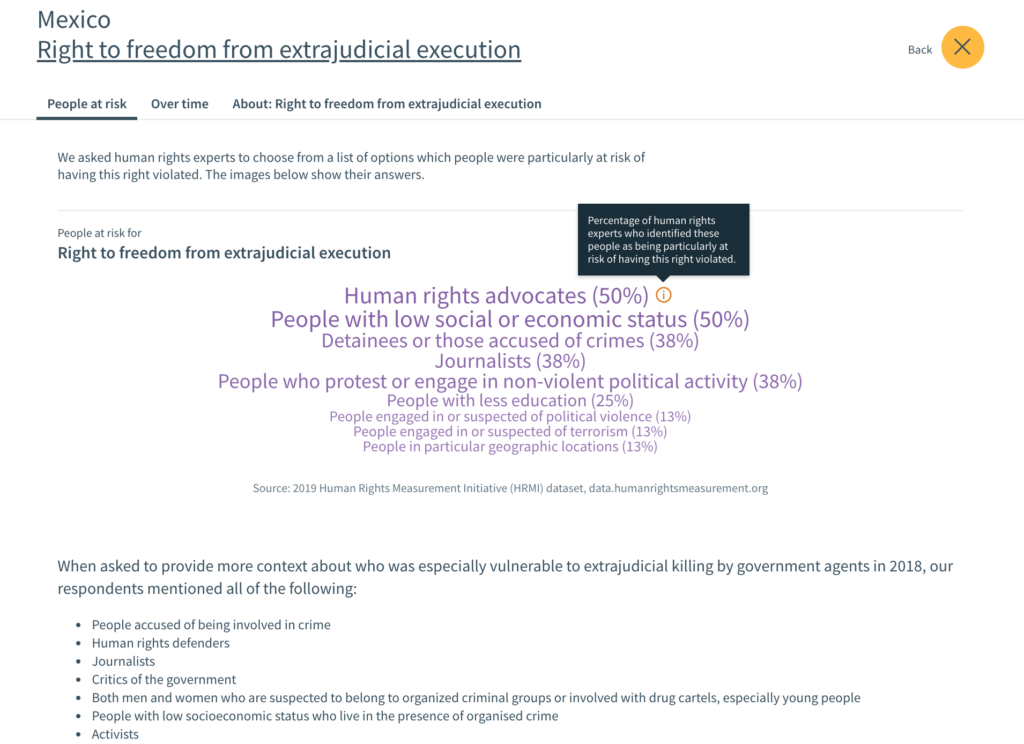
People at risk of disappearance in Mexico. Explore the data here.
HRMI data demonstrate that Mexico has a very poor record of civil and political rights abuses, and a wall on the southern border between Mexico and the United States is likely to inflame civil and political rights abuses. Conflict could increase between the rival drug cartels and the Mexican government as the supply of drugs, weapons, and human trafficking is reduced. Cartels respond aggressively and violently to defend the supply of their illegal revenues.
Building a border wall successfully reduces overland cartel human trafficking and drug distribution routes, however, United States and Mexico must be prepared for the escalation in violence. Security forces, military detachments, and more resources will be necessary to contend with the spike in violence from the construction of a border wall.

